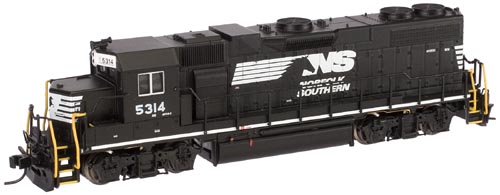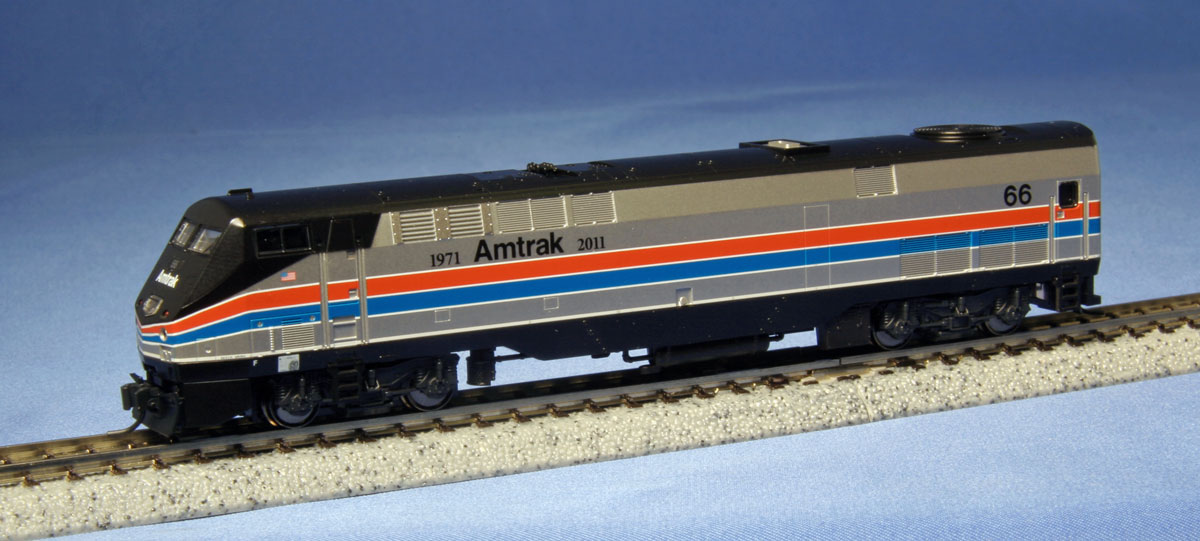Model Information:  The drop-end 52'6" gondola was built in the 1950s for CN, CP and TH&B.
The drop-end 52'6" gondola was built in the 1950s for CN, CP and TH&B.
This tooling is owned by Prairie Shadows but actual production is performed via Rapido Trains in their Chinese factory.
It has seen only one run with CP, CB and TH&B road numbers; a second run was announced shortly after the first one in 2013, with more Canadian roadnames (Algoma Central, BC Rail and PGE) as well as a number of US railroads (Lehigh Valley, Conrail, Rio Grande, Western Maryland, Reading, NY Central), but has never been released so far.


It features:
 The drop-end 52'6" gondola was built in the 1950s for CN, CP and TH&B.
The drop-end 52'6" gondola was built in the 1950s for CN, CP and TH&B.This tooling is owned by Prairie Shadows but actual production is performed via Rapido Trains in their Chinese factory.
It has seen only one run with CP, CB and TH&B road numbers; a second run was announced shortly after the first one in 2013, with more Canadian roadnames (Algoma Central, BC Rail and PGE) as well as a number of US railroads (Lehigh Valley, Conrail, Rio Grande, Western Maryland, Reading, NY Central), but has never been released so far.


It features:
- Fully detailed sides and interior;
- Full underbody detail;
- Die-cast frame for optimum weight;
- Body mounted Micro-Trains couplers;
- Correct ride height;
- Accurate paint and lettering.
Prototype History: In US railroad terminology, a gondola is an open-topped rail vehicle used for transporting loose bulk materials. Because of their low side walls, gondolas are also suitable for the carriage of such high-density cargoes as steel plates, steel coils, and bulky items such as prefabricated sections of rail track. For weather-sensitive loads, these gondolas are often equipped with covers.
All-steel gondolas date back to the early part of the 20th century. However, most of the early ones were shorter and used 40' designs. The ubiquitous 50' steel gondola we see modeled so often today are typical of railcars produced since the end of the second world war. In the late 1940s, steel became once again readily available and new, longer gondolas were produced to transport material for America's booming economy. Generally, these 50 foot cars have a capacity of 70 tons and were actually 52'6" long. The first models of this design were produced by the Erie Railroad and the Greenville Steel Car Co, but nearly identical cars were produced by Pullman, ACF and Bethlehem.
All-steel gondolas date back to the early part of the 20th century. However, most of the early ones were shorter and used 40' designs. The ubiquitous 50' steel gondola we see modeled so often today are typical of railcars produced since the end of the second world war. In the late 1940s, steel became once again readily available and new, longer gondolas were produced to transport material for America's booming economy. Generally, these 50 foot cars have a capacity of 70 tons and were actually 52'6" long. The first models of this design were produced by the Erie Railroad and the Greenville Steel Car Co, but nearly identical cars were produced by Pullman, ACF and Bethlehem.
Road Name History: The Canadian National Railway Company (reporting mark CN) is a Canadian Class I railway headquartered in Montreal, Quebec that serves Canada and the Midwestern and Southern United States. CN's slogan is "North America's Railroad". CN is a public company with 24,000 employees. It had a market capitalization of 32 billion CAD in 2011. CN was government-owned, having been a Canadian Crown corporation from its founding to its privatization in 1995. Bill Gates was, in 2011, the largest single shareholder of CN stock.
CN is the largest railway in Canada, in terms of both revenue and the physical size of its rail network, and is currently Canada's only transcontinental railway company, spanning Canada from the Atlantic coast in Nova Scotia to the Pacific coast in British Columbia. Its range once reached across the island of Newfoundland until 1988, when the Newfoundland Railway was abandoned.
Following CN's purchase of Illinois Central (IC) and a number of smaller US railways, it also has extensive trackage in the central United States along the Mississippi River valley from the Great Lakes to the Gulf of Mexico. Today, CN owns about 20,400 route miles (32,831 km) of track in 8 provinces (the only two not served by CN are Newfoundland & Labrador and Prince Edward Island), as well as a 70-mile (113 km) stretch of track (see Mackenzie Northern Railway) into the Northwest Territories to Hay River on the southern shore of Great Slave Lake; it is the northernmost rail line anywhere within the North American Rail Network, as far north as Anchorage, Alaska (although the Alaska Railroad goes further north than this, it is isolated from the rest of the rail network).
The railway was referred to as the Canadian National Railways (CNR) between 1918 and 1960, and as Canadian National/Canadien National (CN) from 1960 to the present.
Read more on Wikipedia.
CN is the largest railway in Canada, in terms of both revenue and the physical size of its rail network, and is currently Canada's only transcontinental railway company, spanning Canada from the Atlantic coast in Nova Scotia to the Pacific coast in British Columbia. Its range once reached across the island of Newfoundland until 1988, when the Newfoundland Railway was abandoned.
Following CN's purchase of Illinois Central (IC) and a number of smaller US railways, it also has extensive trackage in the central United States along the Mississippi River valley from the Great Lakes to the Gulf of Mexico. Today, CN owns about 20,400 route miles (32,831 km) of track in 8 provinces (the only two not served by CN are Newfoundland & Labrador and Prince Edward Island), as well as a 70-mile (113 km) stretch of track (see Mackenzie Northern Railway) into the Northwest Territories to Hay River on the southern shore of Great Slave Lake; it is the northernmost rail line anywhere within the North American Rail Network, as far north as Anchorage, Alaska (although the Alaska Railroad goes further north than this, it is isolated from the rest of the rail network).
The railway was referred to as the Canadian National Railways (CNR) between 1918 and 1960, and as Canadian National/Canadien National (CN) from 1960 to the present.
Read more on Wikipedia.
Brand/Importer Information: We focus on quality not quantity. Fair prices and fantastic service are our top priority, but special runs and exclusive items are what set us apart!
It is my hope we can help you make the most of our wonderful hobby. - Jeff Arnold
It is my hope we can help you make the most of our wonderful hobby. - Jeff Arnold
Commissioner Information:  Prairie Shadows Model Railway Co. is a small model railway supply company located in Winnipeg, MB, and owned by Jeff Arnold. They pride themselves in providing solid service and fair prices.
Prairie Shadows Model Railway Co. is a small model railway supply company located in Winnipeg, MB, and owned by Jeff Arnold. They pride themselves in providing solid service and fair prices.
They commissioned several exclusive N scale models to Rapido Trains Inc.
They commissioned several exclusive N scale models to Rapido Trains Inc.
Item created by: Alain LM on 2018-06-03 04:31:17. Last edited by Alain LM on 2020-12-02 12:13:07
If you see errors or missing data in this entry, please feel free to log in and edit it. Anyone with a Gmail account can log in instantly.
If you see errors or missing data in this entry, please feel free to log in and edit it. Anyone with a Gmail account can log in instantly.











